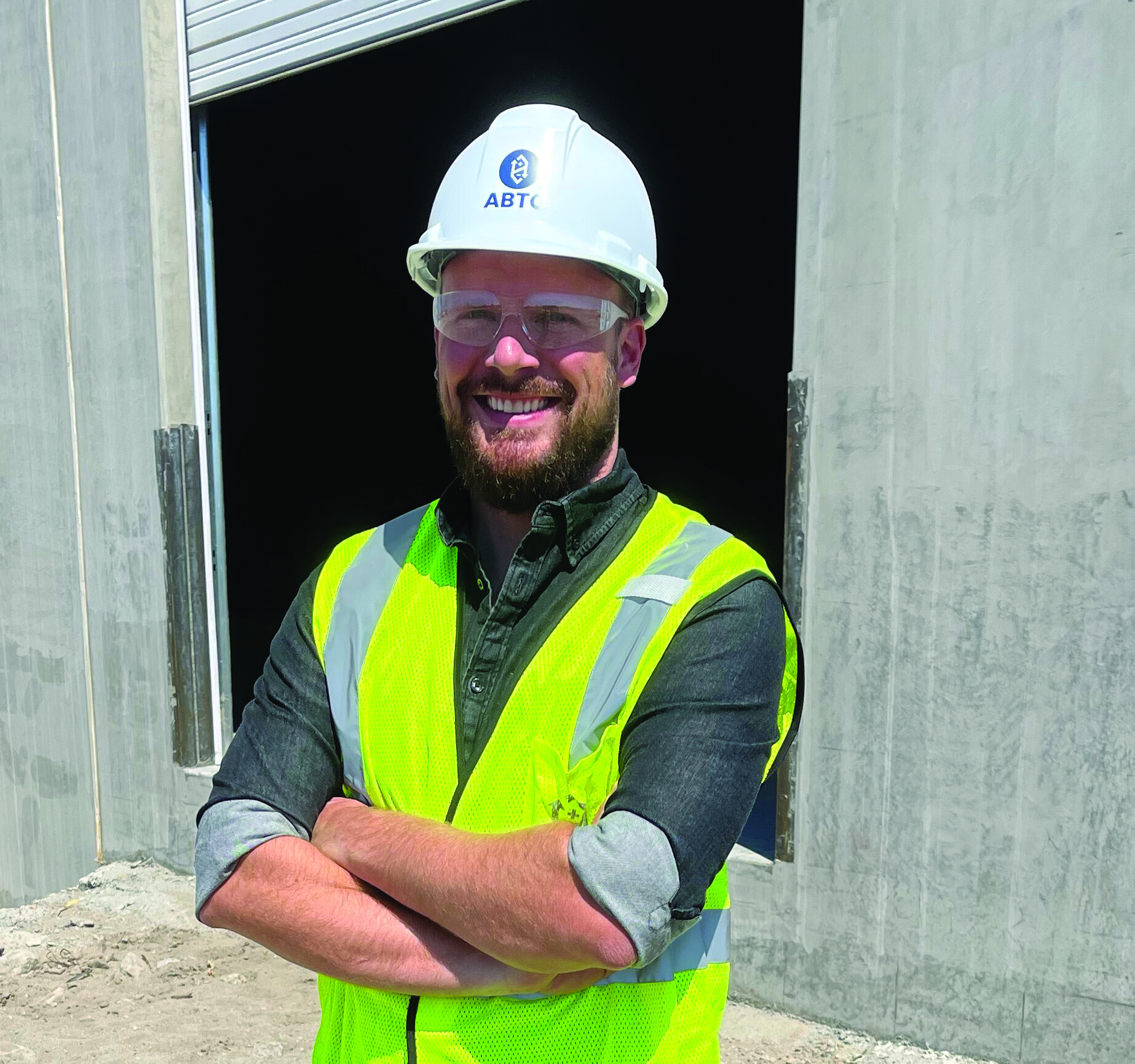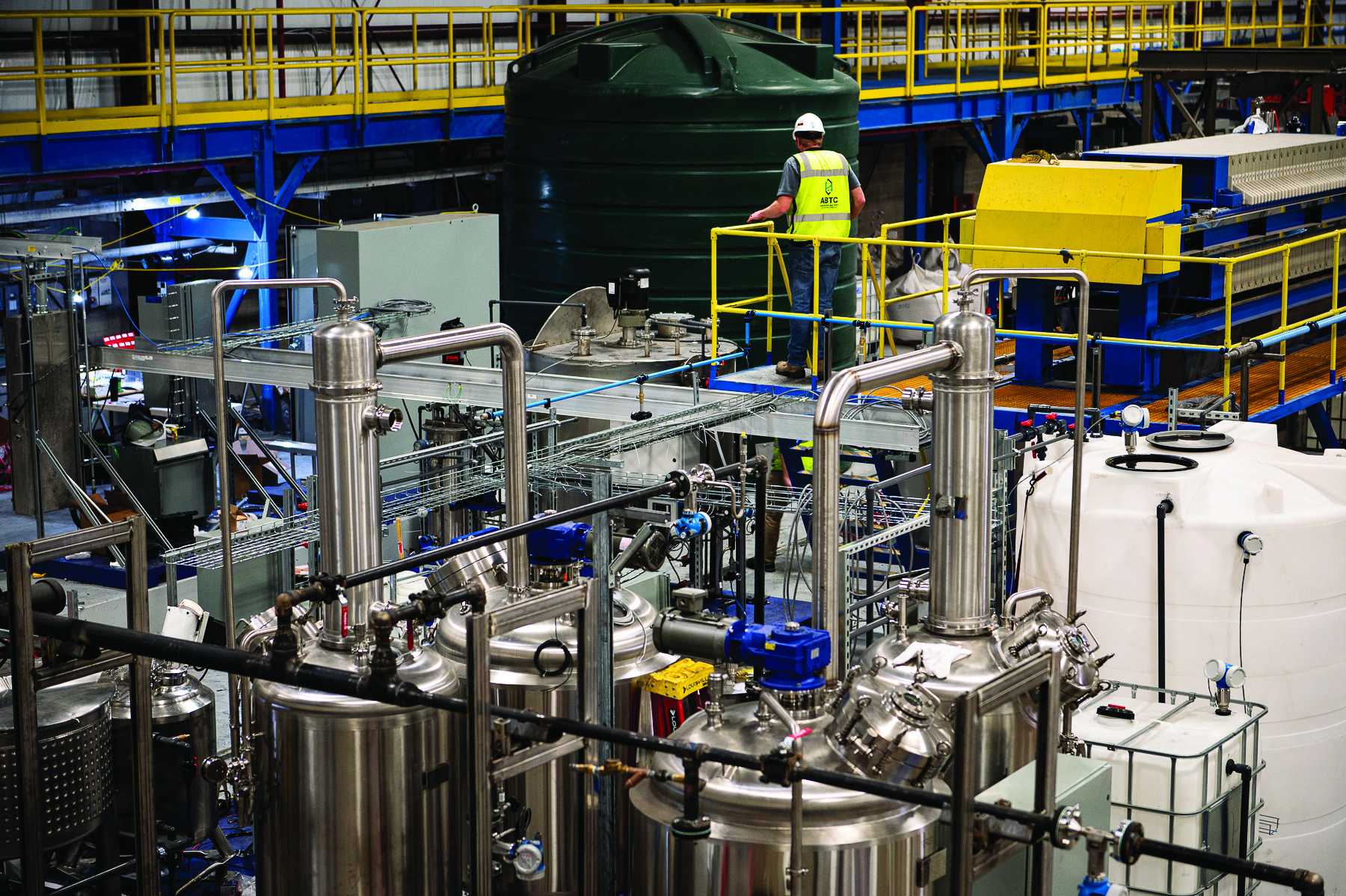American Battery Technology Company’s Tonopah Flats lithium project. Courtesy American Battery Technology Company
True to its name, American Battery Technology Company says it has “cracked the code” for extracting lithium from lithium-rich sedimentary clays in central Nevada.
American Battery Technology Company leadership told NNBW during a tour of the company’s lithium-ion battery materials plant at Tahoe Reno Industrial Center that its in-house experts have developed an extraction process that differs from traditional clay extraction methods. ABTC’s proprietary selective leach extraction method selectively targets the lithium within clay deposits and does not result in an abundance or excess of additional minerals and materials that need to be dealt with, said Director of Engineering Mitch Dreier.
“We are a technology company, and our goal is to find these first-of-kind methods and bring them up to scale,” Dreier said. “Our team has experience scaling large factories, and we also have a very talented in-house R&D team to prove out these technologies that will solve the lithium supply chain challenges.”
ABTC might be more well-known for its proprietary battery recycling technology the company has spent the past few years proving out at its corporate headquarters, but American Battery Technology Company’s roots are as a junior exploration mining company. It’s one of three companies working to bring online a domestic supply of lithium from Nevada’s lithium-rich claystone sedimentary deposits.
 Mitch Dreier
Mitch DreierABTC plans to deploy its proprietary selective leach extraction process at its Tonopah Flats lithium project. The resource encompasses 10,340 acres near Big Smoky Valley about five miles west of the town of Tonopah in Esmeralda County.
Currently, there’s only one lithium mine in production in the United States. Albemarle’s Silver Peak mine in Esmeralda County extracts lithium from brine located deep underground. The brine is pumped into a series of solar evaporation ponds to bring it up to commercial-grade concentration.
Extracting lithium from clay, however, is an entirely different process – it’s more akin to chemical refining than hard rock mining.
In early 2021, ABTC received a grant from the U.S. Department of Energy to fund a pilot plant at its headquarters offices at Tahoe Reno Industrial Center to demonstrate the viability of the company’s lithium-extraction technologies. Eighteen months later, ABTC received an additional grant of $57 million to design and build a $115 million commercial-scale lithium hydroxide refinery at the Tonopah Flats resource site.
The facility initially would process 5,000 metric tons of lithium hydroxide monohydrate annually, but could be ramped up to handle as much as 30,000 metric tons a year. The refinery will sit on about 120 acres but could scale to as much as 400 acres with future expansions, Dreier said.
The goal of the DOE grant was to prove out ABTC’s first-of-kind technology for its selective extraction and refining processes, Dreier said.
“We won that grant against traditional mining methods and extraction technologies that other Nevada-based companies are using,” he said. Those technologies will have sulfur combustion plants to feed into an acid-leach process. That process really breaks the clay down and has a high lithium recovery rate, but you get very poor selectivity. There is a lot of other stuff coming out in that material, and there are risks with putting that material back in the ground.
“Our process allows us to selectively extract the lithium from the clay rather than using brute force to break down the entire clay structure. That allows us to use less energy and makes it easier to go back and dry-stack tailings.”
Initial capital costs to bring the refinery online at Tonopah Flats is $785 million for Phase 1, which could process 30,000 tons of lithium hydroxide annually. Dreier said ABTC will process materials onsite to avoid the many inefficiencies with transporting raw materials to another site for processing and refining. The claystone lithium resource at Tonopah Flats is very consistent across the scope of planned mining activity, Dreier added. It’s also quite shallow.
“There’s not a lot of overburden that we would need to spend three years removing to get to the lithium; it’s really accessible,” Dreier said. “And with our selective extraction process, we also can take a very low cutoff of our grade.”

Courtesy American Battery Technology Company
American Battery Technology Company’s lithium-ion battery materials plant at Tahoe Reno Industrial Center.
American Battery Technology Company is working through permitting for both the mine and refinery and hopes to receive a record of decision sometime in 2025, Dreier said. ABTC has not yet determined if it will use contract or in-house mining at Tonopah Flats.
ABTC is working with engineering, procurement and construction company Black and Veatch of Overland Park, Kansas, on refinery design while incorporating what’s been learned from the pilot plant at TRI Center. ABTC produced its first battery-grade lithium from the pilot plant in May of 2024, and continues to fine-tune and run that operation.
The company is well positioned to begin construction of the refinery facility once it receives its Record of Decision from the Bureau of Land Management — more than half of ABTC’s employees helped bring Tesla’s Northern Nevada Gigafactory out of the ground, Dreier noted.
“We have experienced scaling,” he said. “Electrification continues to grow, and companies are building tens of billions of dollars of battery manufacturing infrastructure, but they don’t have a plan on how they are going to get their lithium supply.”
ABTC is taking a two-pronged approach to solve lithium supply chain issues. In addition to the Tonopah Flats lithium project, ABTC also has developed a proprietary recycling process for lithium-ion batteries.
“We are taking a holistic look at supply chain problems,” Dreier said. “Domesticating new resources is easily done with recycling — the battery recycling supply chain allows you to have all the different materials you need to build a new battery.”
The problem, Dreier noted, is scale. The domestic battery supply chain continues to grow, but it lags so far behind current demand that battery makers can’t just use existing supply to meet new demand.
“Fifty years from now, recycling plays a huge role in that. But with new growth, we need new mines,” Dreier said. “If the pot is growing, you can’t just use the same ingredients over and over again; you need to add more ingredients to the pot.
“We need virgin material coming out of the ground in addition to our battery recycling operations; that’s why we are attacking it from both directions.”